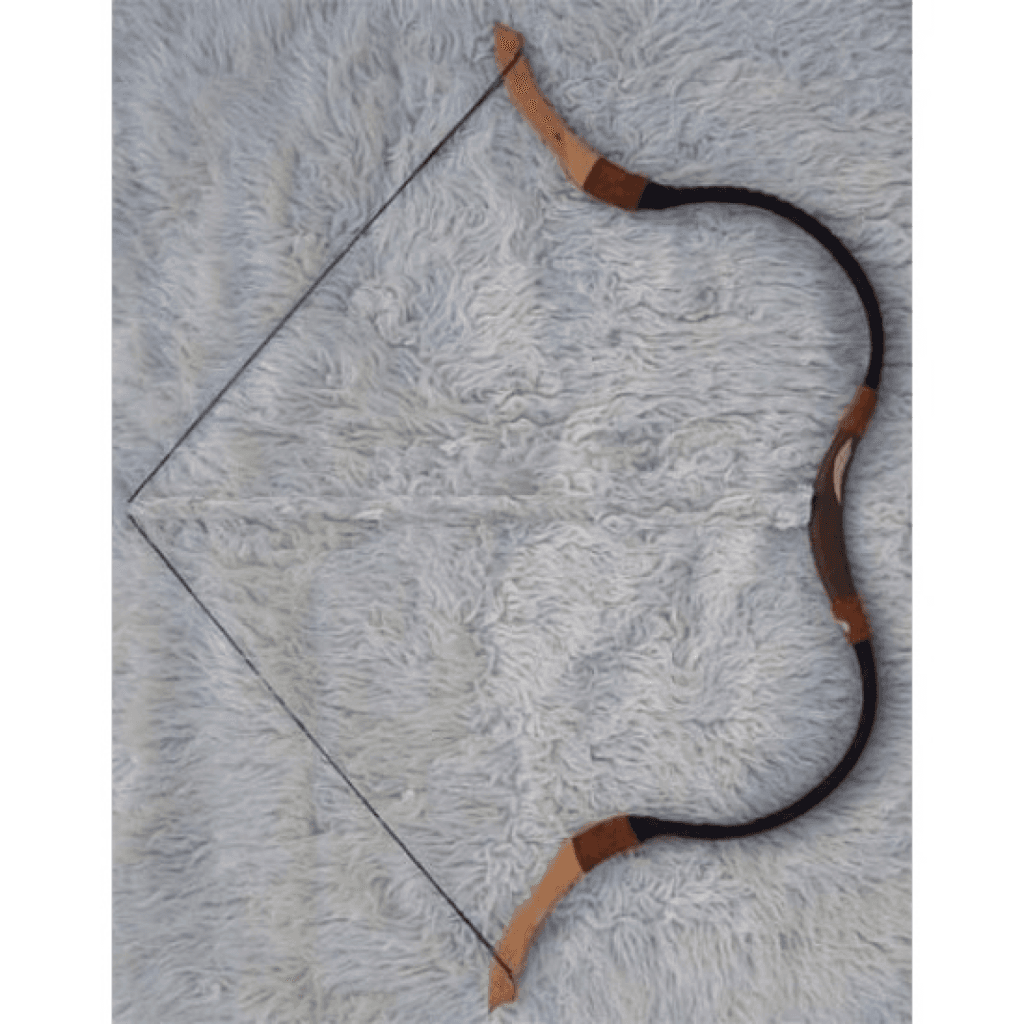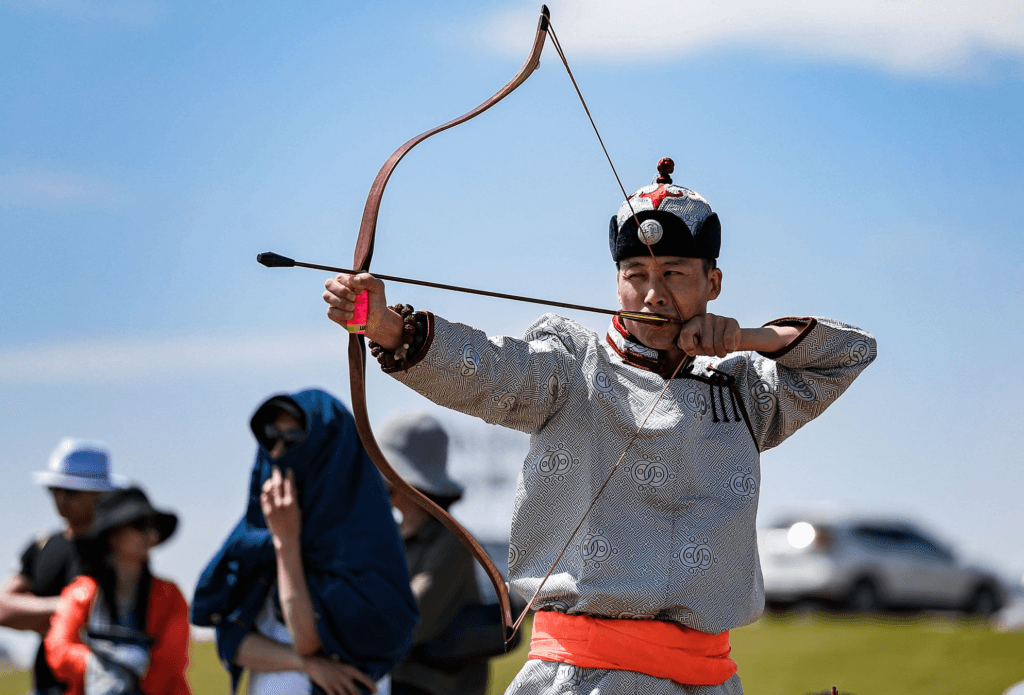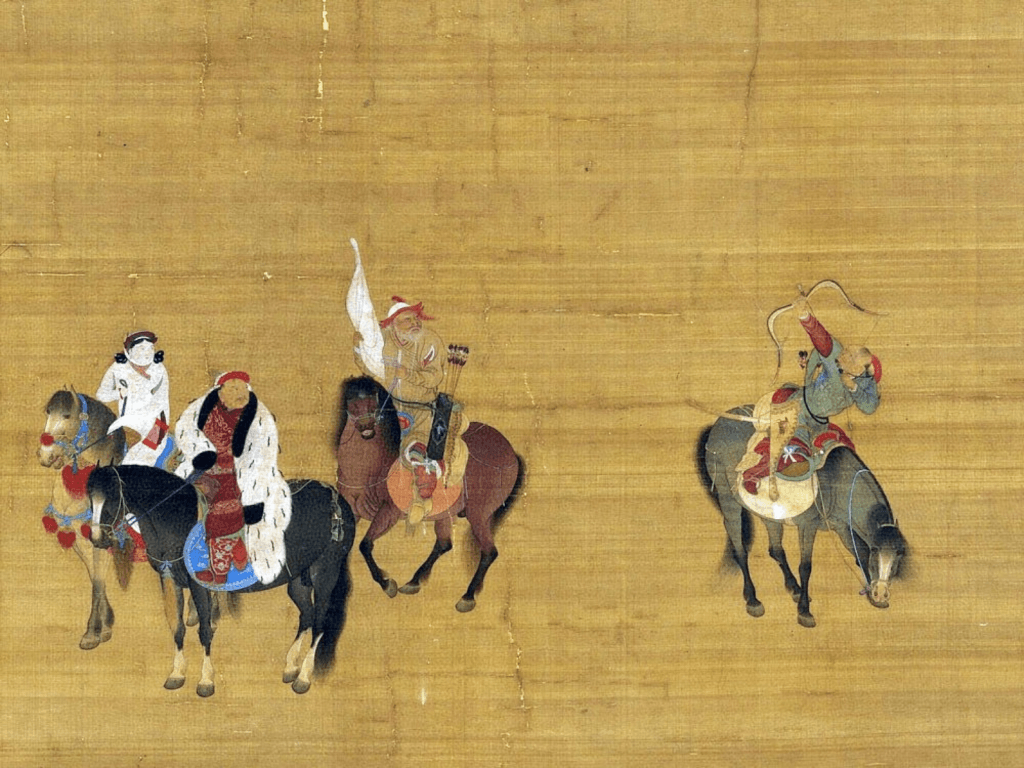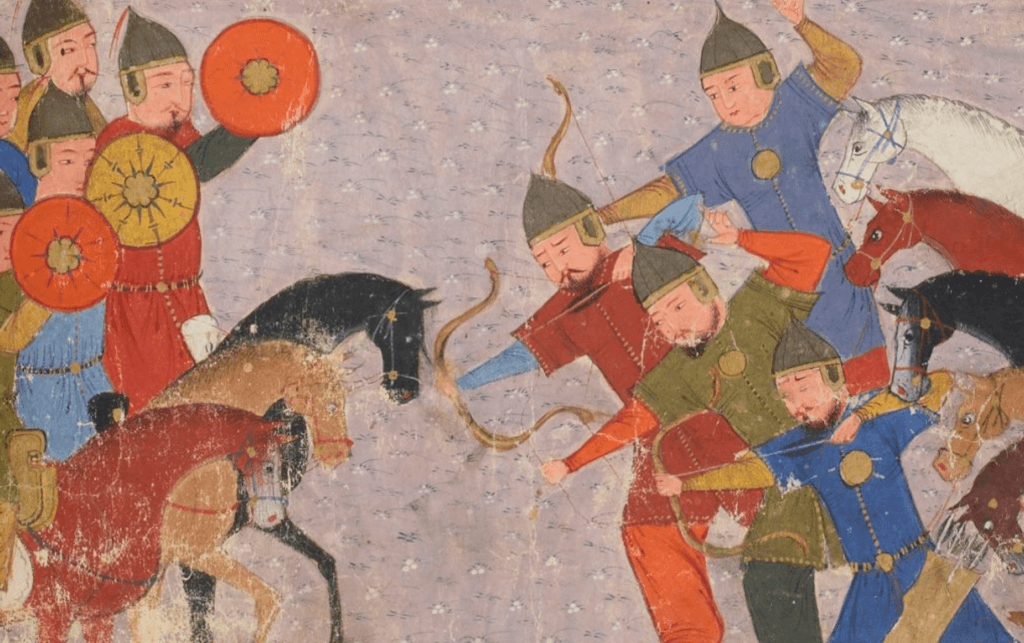The question “What type of bow did the Mongols use?” reveals the incredible ingenuity behind one of history’s most powerful weapons: the Mongolian bow. The answer to what type of bow did the Mongols use is the Mongolian recurve bow, a composite bow designed for efficiency, power, and portability, essential for the fast-moving Mongol armies. Its power and effectiveness were not only due to its construction but also because of the mongolian horseback archery techniques that accompanied it. The Mongol armies were virtually unstoppable due to their mastery of this bow, allowing them to conquer vast territories swiftly and efficiently.
Unlike European longbows, the Mongolian recurve bow was smaller but more powerful, owing to its unique design. Its compact form allowed Mongol warriors to wield it with precision while riding at full gallop. This deadly combination of mobility and power transformed the mongolian bow into one of the most feared weapons of its era.
The Core Characteristics of the Mongolian Bow

The traditional Mongolian bow was a composite recurve bow, meticulously crafted from wood, horn, and sinew. Each material played a crucial role in the bow’s performance:
- Wood: Served as the core structure, providing flexibility and durability.
- Horn: Applied to the bow’s inner side (facing the archer), giving the bow compressive strength.
- Sinew: Sourced from animal tendons, glued to the outer side for tensile strength and elasticity.
This blend of materials allowed the bow to store and release energy efficiently, making it far more powerful than similarly sized bows. Recurve bows are unique because of their ability to store more energy in their bent limbs, allowing the mongol bow and arrow to have a greater range and force than bows of the same size.
The size of the bow was typically between 120 cm and 150 cm, smaller than European longbows but perfectly suited for the mongolian horseback archery style. The compact size allowed Mongol archers to easily maneuver and fire from the saddle, a technique critical in battle.
The Power and Range of the Mongolian Recurve Bow

The mongolian recurve bow had an incredible draw weight, typically ranging from 100 to 160 pounds. For comparison, English longbows had a draw weight between 80 and 120 pounds, making the Mongolian bow significantly more powerful despite its smaller size. A well-trained Mongol archer could shoot arrows accurately at targets 300 to 400 meters away, with some reports suggesting extreme ranges of up to 500 meters under optimal conditions.
One statistic that illustrates the bow’s power is the force it could generate. Tests on modern replicas show that Mongolian bows could deliver an arrow at speeds up to 150 feet per second, allowing arrows to penetrate armor and shields with relative ease.
Mongolian Arrows: The Perfect Complement to the Bow

The effectiveness of the mongolian bow was amplified by the mongolian arrows. These arrows were crafted to fit the specific needs of the Mongol army, depending on the type of enemy they faced. The shafts were made from lightweight woods like birch, which allowed for speed and stability in flight.
There were typically three types of arrowheads used:
- Broadheads: Designed for maximum tissue damage, used against unarmored or lightly armored enemies.
- Bodkin points: Narrow, sharp tips that could penetrate even the strongest armor, crucial in battles against well-armored adversaries like European knights.
- Whistling arrows: Used for signaling during battle or to confuse and intimidate enemy troops.
A typical mongolian arrow measured around 75 to 85 cm in length and was balanced for both speed and accuracy. The fletching, often made from eagle or goose feathers, helped stabilize the arrow in flight, ensuring precision even in fast-paced combat.
Mongolian Horseback Archery: A Deadly Combination

What truly set the Mongols apart was their mastery of mongolian horseback archery. Starting at a young age, Mongol children were taught to ride and shoot, honing their skills over years of practice. By the time they were adults, Mongol warriors could shoot with deadly precision while riding at full speed.
The technique known as the Parthian shot—where an archer would shoot behind them while riding away from an enemy—was perfected by the Mongols. This allowed them to retreat while still inflicting damage, confusing and demoralizing their enemies. Mongols archery wasn’t just about skill; it was about using the terrain, speed, and tactics to outmaneuver opponents.
Historical records suggest that the Mongol army’s mobility and ability to shoot accurately from horseback were key factors in their ability to defeat much larger armies. The speed at which they could advance, attack, and then retreat made them an elusive and formidable force. The mongols bow and arrow was central to this strategy.
The Mongolian Bow in Battle: Weapon of Conquest
During the Mongol invasions, this bow was more than just a tool—it was a force multiplier. What weapons did the Mongols use alongside the bow? While the Mongols carried swords, maces, and lances for close combat, the mongolian bow was their primary weapon, particularly in the opening phases of battle.
Mongol tactics often involved feigned retreats, where archers would draw enemy forces into a chase. As the enemy pursued, the Mongol horse archers would turn and unleash volleys of arrows, decimating the opposition from a safe distance. Once the enemy was weakened, Mongol cavalry would close in for hand-to-hand combat.
This tactic, known as the “Mongol whirlwind,” relied heavily on the speed and accuracy of the mongolian horseback archery. The mongolian recurve bow made this possible by allowing the archers to fire quickly and effectively, even while mounted.
Training and Expertise of Mongol Archers
The proficiency of mongols archery was no accident. From childhood, Mongol boys were trained to use the bow as soon as they could ride. They practiced shooting targets while riding, hunting, and in mock battles. By the time they were enlisted in the Mongol army, their skills with the mongolian bow were exceptional.
Historical sources note that Mongol archers were expected to shoot accurately at full gallop, a skill very few other cultures ever mastered. Training was rigorous, and a warrior’s life often depended on their ability to hit a moving target from horseback. The Mongol military even held competitions to reward the best archers, further encouraging excellence in mongolian archery.
Statistical Insights into Mongol Archery Success

To put the Mongols’ success into perspective, historians estimate that at the height of the Mongol Empire, an individual warrior could fire around 12 arrows per minute while riding at full speed. In comparison, English longbowmen were capable of around 6 to 7 arrows per minute. This rapid-fire capability, combined with the mobility of their mounted units, gave the Mongols an overwhelming advantage in most of their battles.
Moreover, Mongol armies could cover up to 160 kilometers in a single day thanks to their endurance and mounted tactics. This speed allowed them to catch enemies off-guard and strike at unexpected moments. The mongols bow and arrow was integral to these lightning-fast campaigns.
Modern-Day Legacy of the Mongolian Bow
Today, when people ask what type of bow did the Mongols use, they are often surprised to learn that the Mongolian recurve bow is still used in traditional archery competitions in Mongolia. Its design has been passed down through generations, with modern versions staying true to the original materials and techniques. The legacy of the Mongolian bow remains strong, with archery enthusiasts worldwide recognizing its historical and practical significance.
Conclusion
The question “What type of bow did the Mongols use?” has a clear answer: the Mongolian recurve bow, a highly effective composite weapon designed for power, speed, and versatility. Its construction from wood, horn, and sinew, combined with the expertise of Mongol horse archers, made it one of the most formidable weapons in history. The Mongolian bow not only contributed to the Mongols’ military dominance but also left a lasting impact on archery techniques that are still respected and practiced today.
What materials were used in the Mongolian bow?
The Mongolian bow was made from wood, horn, and sinew, with each material contributing to its strength and flexibility.
Why was the Mongolian recurve bow so powerful?
The mongolian recurve design allowed for greater energy storage, giving it superior range and power compared to other bows of the same size.
How accurate were Mongolian archers?
Mongolian archers could shoot accurately at distances of up to 300 meters, with reports of extreme accuracy at even greater ranges.
What role did horseback archery play in Mongol warfare?
Mongolian horseback archery allowed Mongol warriors to strike quickly and retreat just as fast, a tactic that confused and devastated their enemies.
Did the Mongols use other weapons besides the bow?
While the mongolian bow was their primary weapon, Mongol warriors also used swords, maces, and spears, especially in close combat situations.

